Call of Duty: Black Ops 6 review – wobbling franchise retreats to safe ground

For a series built on high-octane thrills and explosive gratification, Call of Duty: Black Ops 6’s withdrawal to the well-trodden formula echoes the wider industry’s continued allergy to risk.
Playing Call of Duty: Black Ops 6’s multiplayer this week I felt something I hadn’t felt when dashing about in Call of Duty for a little while: just ever so slightly bored.
It’s a strange one, because in isolation, Black Ops 6’s multiplayer is actually very good. The headline addition this year is what the developers at Treyarch and co-developer Raven Software have called Omnimovement. I’m a big fan of this. Less so the actual Omnimovement itself, which is perfectly fine (in short: it’s quite fun and a bit silly, and it suits the whiplash rhythm and exaggerated tone of what Black Ops 6 is going for this year). I’m more into the idea that we’re back to giving actually-quite-subtle gameplay mechanics a ridiculous, proper noun name again. All of a sudden it’s 2013 again, discovering Call of Duty’s answer to the threat posed by Battlefield 4’s Levolution.
The gameplay impact is, as mentioned, ultimately quite low-key, but also undoubtedly positive. The basic premise of Omnimovement is that you can now sprint in all directions, rather than just forwards, and combined with both sliding and diving (each introduced to the series a little while ago now), it makes for some wonderfully silly traversal. Regularly you’ll find yourself ambushed by players skidding out from behind crates and popping up over waist-high cover like an increasingly comical game of whack-a-mole. It’s the fastest, most hectic, and most relentless CoD’s multiplayer has been in the post-Infinite Warfare era, when a handful of die-hards demanded the series get back to “boots on the ground”.
That frenetic speed is enhanced – and exacerbated – by Black Ops 6’s maps. Again, this is something that works wonderfully in isolation: map design in multiplayer is generally excellent. With Subsonic, we have a tight map based around a single, central hangar with a stealth bomber parked inside, a ring road of sorts and just four entrances, but others are even more miniscule, dovetailing nicely with the new movement system designed around reactivity, fluidity and speed. At that truly tiny end of the scale, it gets openly comical with Stakeout, a map based in a single, one-story apartment of maybe eight rooms and a balcony with barely enough room to beat a rug. It’s one of the smallest CoD maps I’ve ever played. You won’t survive for more than five or 10 seconds at a time, the entire interior an utter whirlwind of sprinting, diving, sliding, bullets, and explosives of all kinds.
More balanced, and two personal favourites of mine, are Skyline and Lowtown. Skyline is the regular vote-winner in pre-match lobby choices and understandably so. It’s based on a penthouse mega-apartment – a nice inversion of Stakeout’s claustrophobia – that overlooks its own large pool and features a fun, panic-room style secret passageway beneath the main map from one end to the next. Hiding in the pool and popping out to take down unaware passers-by, or sneaking through the hidden doors behind a bookcase, is peak Call of Duty, going right back to the days of the original Black Ops. Similarly Lowtown allows for all kinds of subnautical trickery thanks to it being set among dilapidated Mediterranean buildings and a network of Venice-like canals. I’ve had a blast when diving underwater, sneaking through a hole in a semi-collapsed building, and catching entire groups defending the central chokepoint (point B in most take-and-hold modes) from the one angle they didn’t expect.
There’s plenty more like this, with almost all of Black Ops 6’s 16 launch maps featuring some kind of hidden entrance, tunnel, waterway, trench, or backdoor path. The overarching result is a sense of playfulness and trickery which, again, harkens back to some of Call of Duty’s finest online multiplayer maps and moments.
But there is a catch: these maps really are small, right across the board. Black Ops 6’s multiplayer has launched with the somewhat unusual decision of having only 6v6 modes available, meaning no Ground War or equivalent. Players all have their preferences, of course, but the issue here isn’t so much that one size or mode is better, but that in having the option to switch between them you have variety. Personally, I love a good Ground War where you can establish a proper front line and get some real push and pull at key objectives playing out over longer periods of time. There’s room to construct your own sub-narratives – often you find your own nemesis down an ‘alley’ of a larger map’s main routes, setting yourself your own personal mission of decamping a stubborn sniper via lengthy steal operations in behind, or pinning down the flow of enemies with a smart sniper encampment of your own.
Even just hopping in and out of the odd vehicle helps break things up. In sticking to these small-sided rounds, a huge amount is lost. Take weapons and loadouts: the vast majority of players use either SMGs or Assault Rifles, with Marksman Rifles and Snipers utterly pointless, LMGs only occasionally practical and Shotguns too specialised. Killstreaks, meanwhile, seem unusually rare – it might be one in five-plus games I see someone earn a scout chopper from barely half-way along the killstreak tree. More nebulous, but for me more importantly, there’s just a general sense that nothing really matters when you’re always so close to death.
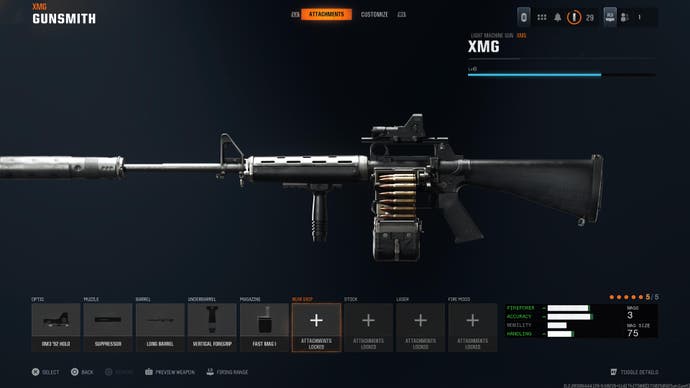
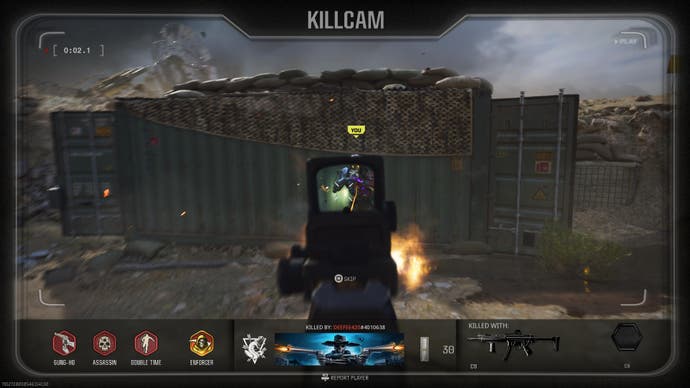


This is an issue modern Call of Duty’s always struggled with, of course, being a twitch shooter based on immediacy. But with Black Ops 6, it feels particularly egregious. In multiple ‘kill cam’ playbacks, I’ve seen myself shoot someone from behind, be shot from behind myself, and then seen my own assassin shot from behind too. Rounds feel like living versions of that meme of assassins in a church, each one holding a gun to another’s head only to have another gun held to their own head, by another assassin behind them. Everyone’s kill/death ratio seems to hover between 0.9 and 1.1. In other words, broadly what happens in a match is you spawn, get a kill, then die – maybe you get two or three then die; maybe you go two or three deaths without a kill, and this is seemingly universal. I’m left looking at my long line of weapon unlocks, and the fact I’ve had no reason whatsoever to move beyond the AR and SMG I started with, and I wonder what exactly is the point of it all.
It’s a crying shame, because again that moment-to-moment is so inherently fun. The maps – despite their small size – include some of my personal favourites in years, and the guns, too, feel predictably excellent. That goes without saying, but it shouldn’t: there is real craft in making a gun feel good, from sound design on the hit feedback to the natural movement and sway, the perfectly tuned pew-pew and boom.

The menus and perks system have also had a welcome overhaul, to the point where this is probably the clearest and easiest to navigate Call of Duty multiplayer system in recent memory. As for Perks, each one now falls into one of three classes which can be broadly categorised as damage, stealth, and utility, and when you have three equipped from the same class you get a little bonus, rewarding specialisation and a bit of tactical thinking. In fairness, most sensible players generally specialised in these areas already, but thanks to these more obvious rewards and incentives, I’ve used the stealth one when going for that sneak-up-by-swimming approach to pleasing effect, for instance.
Away from, or perhaps adjacent to, multiplayer is Black Ops’ Zombies effort. I’ll confess up front to being too much of a horror wimp to have ever truly loved Zombies, but I have still found it holds plenty of appeal in the years’ gone by, particularly the original way back with World at War.
This time, Zombies is playable across two large-ish maps, and each has elements of an overarching story (though this is only triggered if you play as one of four specific characters). The classic, arcadey touch remains: survive for as long as you can, with difficulty increasing across rounds, all while trying to earn ever larger sums of income from killing shufflers so you can buy better weapons and ammo and the like. A nice tweak is the ability to ‘exfil’, whereby you can call in an evacuation and work your way to the designated rendezvous point to leave the game as a kind of mission success. Similarly, there are new, user-friendly additions, such as an actual ‘save and quit’ system where you can duck out of a match entirely and then resume it at a later date from the start of that round – something that has, surprisingly, been lacking until now.

Where Zombies begins to lose me, though, is its new meta-progression system. Here you can ‘research’ new pathways to certain bonus abilities by nominating a single ability and fulfilling in-game objectives. Within those nominated abilities, you can also pick a major and minor bonus to have active at a certain time (from a pretty big list to boot). But then there’s Gobblegums – strange, gobstopper sweets you can consume for other, temporary bonuses, which can either be acquired from machines during rounds or equipped beforehand as part of your loadout. That’s not even the half of it, either. There’s a truly ridiculous amount of systems here – you can buy Perk-A-Colas (those things you can also craft between games) from Perk Machines; you can buy weapon upgrades from Pack-A-Punch machines (whose upgrades each have their own tiers); there are armour caches, mystery boxes, strange portals, unlockable gates, and also some fun hidden secret rooms. On and on it goes.
The upside, of course, is that this feels wonderfully generous; it’s about as fully-fledged a mode as Zombies has ever been. On the other hand, however, it also feels frightfully over-engineered, and the cycle of researching, crafting, and upgrading all starts to smack of Destiny 2, as if a handful of rogue Bungie system designers snuck in and staged a coup part way through development. It’s intentionally over-the-top and out-of-pocket, as CoD Zombies has, somehow, developed its own weird reputation for being. But goodness me does it feel unnecessary.
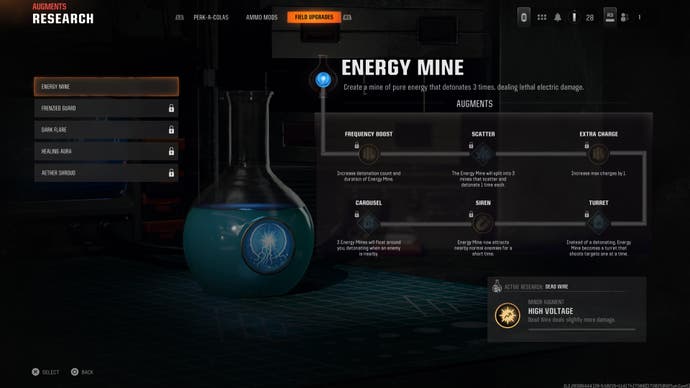
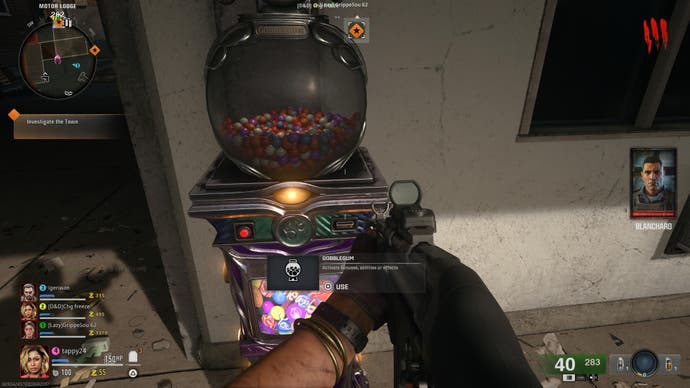
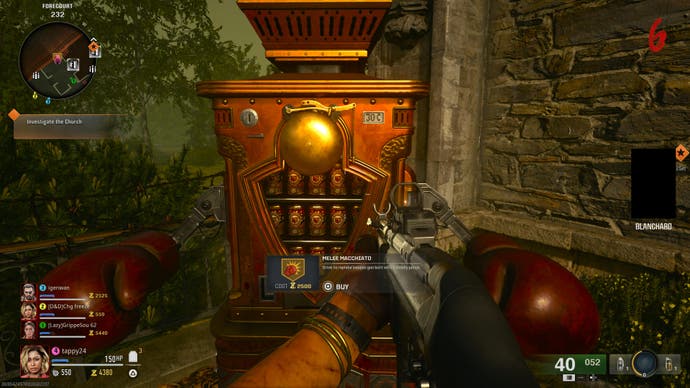
Personally, I’ve always found the point of modes like this to be a break from multiplayer’s try-hard freneticism or Warzone. There’s tension, naturally, but Zombies is ultimately a late-night-with-friends mode – CoD’s original pass-the-pad couch co-op chill zone where you just hole up, mow ’em down and see how long you can survive. Turning it into yet another deep and knotty sweat fest requiring a PhD in min-maxing and meta-progression makes the whole thing feel entirely over-egged, never mind the fact it’s also entirely underexplained – I’ve no idea how a true Zombies beginner could ever hope to get into this mode without some more experienced friends or a load of online guides to help them through it.
Still, as with so much of this year’s Call of Duty, the actual moment-to-moment remains enjoyable enough – it’s Call of Duty’s guns but sillier, and with loads of shuffling melee enemies to mow down. It’s hard to complain too much. I only wish it focused on that core bit of brilliance a little more directly.
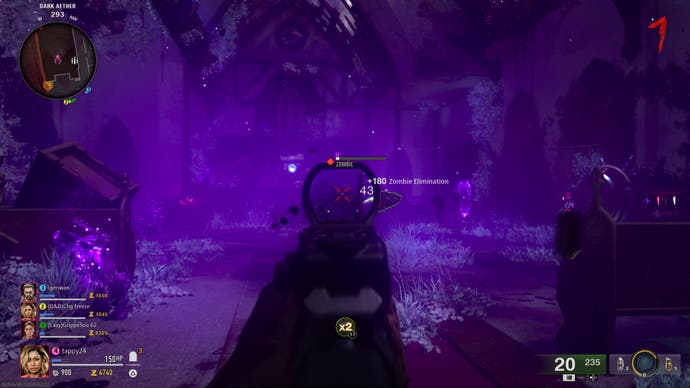
Last and the opposite of least is Black Ops 6’s campaign. I’ve already written about this at length in our Black Ops 6 campaign review, but in brief: it’s mostly excellent. The usual CoD issues remain: it’s wonky when it comes to dealing with real-world political issues, and largely misses its own point when it comes to the general handling of shady wartime practices and using the early 90s’ Gulf War entirely as set-dressing. It leads to the odd moment where you might wonder why, exactly, you’re even shooting at Iraqi soldiers at all.
At the same time, it’s arguably one of the best Call of Duty campaigns in years. The momentum and rhythm from one mission to the next is superb, with vast, rangy variety across mini open world maps and tightly focused stealth. Even within missions, that variety is present. A particular shining highlight is a classic casino heist, set among the opulence and grime of organised crime and wider conspiracy: that mission has you move between each outsized character of your crew, from stealth in the sewers, to server room shenanigans, card tricks and a brilliant vault shoot-out to finish. Much of the campaign continues at that level, and with some surprisingly intimate narrative focus – this is very much a story of a handful of CIA cast-outs and personal vendettas – you can absolutely call it a success.
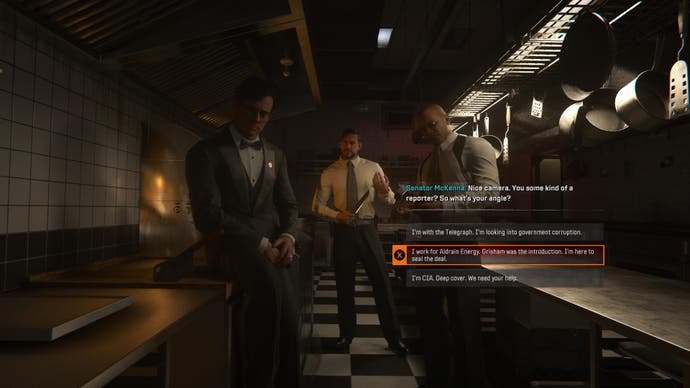
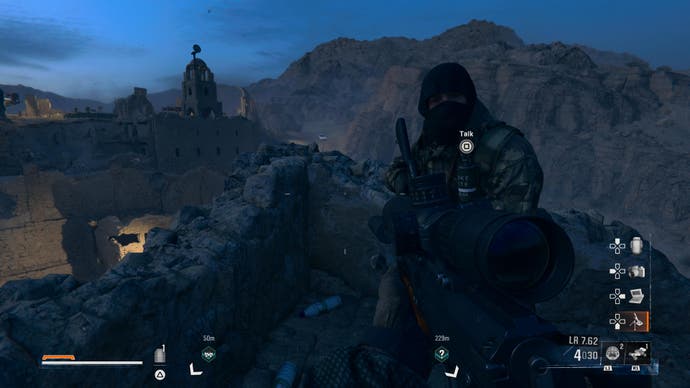


It’s just a shame that each of these pillars don’t truly gamble with Call of Duty’s established formula. In fact, it’s quite the opposite. This is one of the better Call of Duty games in a little while, but it’s also by far the safest, going back to the classic trinity of a tight, action flick campaign, rapid-fire multiplayer and weird zombies. Much of this is understandable. Last year’s Modern Warfare 3 was a disaster, clearly rushed out before it was ready, and where a few minor creative risks with its more open mission structure didn’t come off at all. Of course, the development of Black Ops 6 would have been in motion long before any of this became apparent. But the sense still lingers that this was a purposefully safe bet, repositioning and regrounding the series in the basic foundations of CoD, all while steadying itself after receiving a blow that gave the franchise a genuine rocking.
That’s probably just what Activision and Microsoft need. But it’s not exactly what the industry needs. Right now, the world is crying out for a big shooter to come along with some new ideas, to grab the genre and the medium by the collar and give it a good shake, perhaps conjuring up a bit of renewed energy in the process. Its arrival on Game Pass for the first time, effectively buying it an instantly expanded player base, ought to give Call of Duty room to take some creative risks. But after such a promising campaign, Black Ops 6’s multiplayer offering ultimately did the opposite for me, retreating to the safest of spaces in offering tightly confined, purely twitch-based shooting and little else. I popped in, had an alright time, and then left it much earlier than expected, with few real reasons to come back. Black Ops 6 certainly stabilises the series after the mess of last year, but it’s hardly a shot in the arm.
A copy of Call of Duty: Black Ops 6 was provided for review by Activision.




